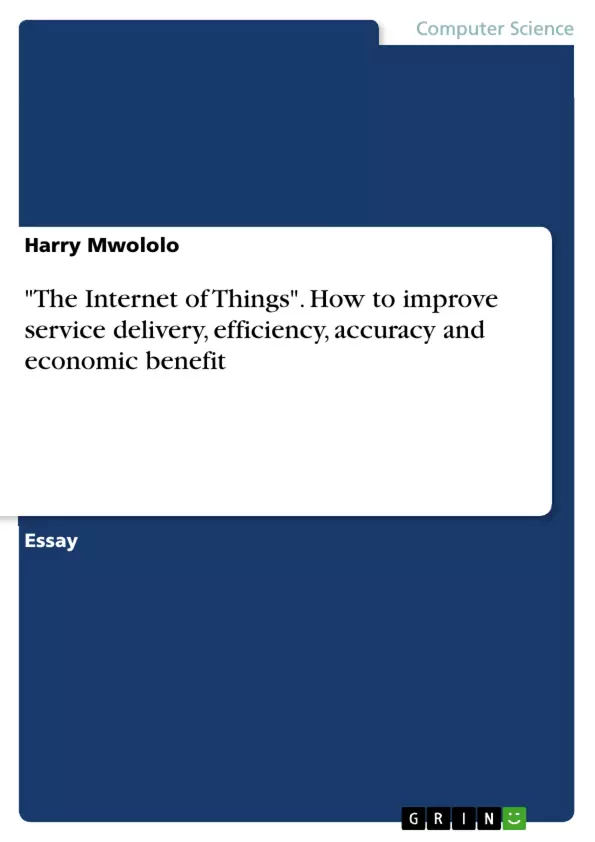The Internet of things (IoT) refers to the inter-networking of several physical gadgets, smart devices, vehicles and buildings, as well as, other devices that are embedded with sensors, actuators, software, electronics, and network connectivity that enable the connected devices to gather and exchange data.
The IoT lets the devices to be controlled and sensed remotely across the prevailing infrastructural network. Through this approach, the internet of things creates opportunities for more direct physical world integration into computer-based systems, further leading to improved service delivery, efficiency, accuracy, as well as, economic benefit in addition to reduction of human intervention.
By 2016 the internet of things vision had advanced as a result of a convergence of several innovations such as instantaneous analytics, global wireless communication, machine learning, embedded systems and commodity sensors. The conventional fields of wireless sensor, embedded systems, automation, control systems and several other technologies led to advancing the Internet of Things.
Inhaltsverzeichnis (Table of Contents)
- The Internet of Things (IoT)
- IoT Applications
- Smart Homes
- Smart Cities
- Intelligent Transportation
- IoT Components
- Sensors
- Actuators
- Embedded Systems
- IoT Benefits
- Improved Service Delivery
- Increased Efficiency
- Reduced Human Intervention
- IoT Challenges
- Security and Privacy
- Interoperability
- Data Management
Zielsetzung und Themenschwerpunkte (Objectives and Key Themes)
This document provides an overview of the Internet of Things (IoT), exploring its definition, applications, components, benefits, and challenges. The paper delves into the concept of how various devices and systems can be interconnected to create a more integrated and intelligent environment.
- The definition and scope of IoT
- The key applications and use cases of IoT
- The components and technologies that enable IoT
- The benefits and challenges associated with IoT implementation
- The future potential and implications of IoT
Zusammenfassung der Kapitel (Chapter Summaries)
The document starts by defining the Internet of Things (IoT) and its key characteristics, outlining how various physical devices are interconnected through sensors, actuators, and network connectivity. It then explores the evolution of the IoT and its potential for integrating physical systems with computer-based systems, highlighting its impact on efficiency, accuracy, and economic benefits.
The paper also examines the various applications of IoT, such as smart homes, smart cities, and intelligent transportation. It delves into the components and technologies that underpin the IoT, including sensors, actuators, embedded systems, and communication protocols. The paper also discusses the key benefits of IoT, such as improved service delivery, increased efficiency, and reduced human intervention.
Finally, the document explores the challenges associated with IoT implementation, such as security and privacy, interoperability, and data management. It concludes by providing insights into the future potential and implications of IoT, emphasizing its transformative power across various industries and sectors.
Schlüsselwörter (Keywords)
The key terms and concepts explored in this paper include: Internet of Things (IoT), sensors, actuators, embedded systems, network connectivity, smart homes, smart cities, intelligent transportation, service delivery, efficiency, accuracy, economic benefits, human intervention, security, privacy, interoperability, data management, future potential, transformative power.
- Arbeit zitieren
- Harry Mwololo (Autor:in), 2017, "The Internet of Things". How to improve service delivery, efficiency, accuracy and economic benefit, München, GRIN Verlag, https://www.hausarbeiten.de/document/384392


